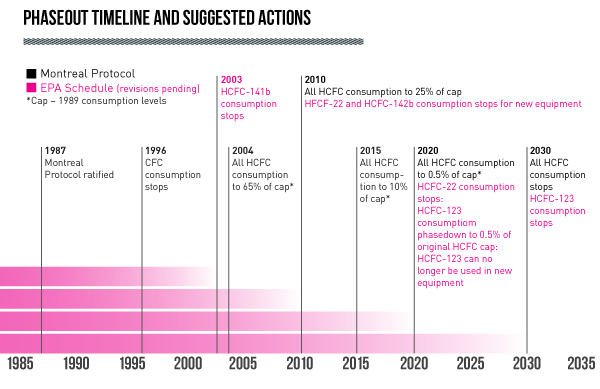![]() 6 minute read
6 minute read
Again the big trends like globalisation, urbanisation, digitalisation, and sustainability contribute to the development of the supply chain services. This time trends heat up the cold chain from all directions: temperature, distance, package, storage, security, and last but not least – environmental impact. What are the solutions for the third party logistics and manufacturers themselves achieving eco-excellence?
Increased
volumes –
tightened
regulations
According to MarketsandMarkets report, the cold chain market is expanding globally doubling its value up to $235 billion by 2020. Not only the food industry but also the pharma is increasing its presence in the global cold logistics market. Food safety issues and counterfeit pharma incidents push governments to tighten the regulations on the supply chains. Regulations expand from transportation only to the storage, extending temperature requirements, packaging, and monitoring of the products. Following the US practices, in the European Union, over 80 percent of pharmaceutical products require temperature controlled transportation.
Furthermore, while green fuel solutions are in the development stage, and the supply chains continue to globalise, the transport quantity in logistics will only grow with the negative impact on the emissions. The supermarkets and manufacturers commit to security lines and locate their plants and storages far from the other sites, influence in developing infrastructure and building the road which we can witness in the emerging economies. And the dilemma occurs: consumer impatience and wide food variety demand trigger business for short and fast distance sourcing and distribution[nbsp]while close sources are less economically beneficial due to real estate rates and higher labour costs. Only future will show which way the dilemma will be resolved. Meanwhile, get introduced to the future scenarios for logistics for 2020, air logistics and storage innovations here.
Phasing out
Freon
Freon is a refrigerant used in ventilation, air conditioning systems, and, of course, cold supply chain. Recognising the danger of ozone-depleting substances, US has already started to eliminate freon usage step by step. The phasingout stages have been developed under the Montreal Protocol. The plan is intended to make the US Freon free by 2030. As the harmful refrigerant is embedded in everyday consumer and business life, the actions are limiting production and consumption of the chemical for all sectors, including the cold chain.

The US regulations will most likely expand worldwide. Moreover, there are already alternatives for Freon, like R-410, which is more performance, energy and cost efficient. What is more, R-410 does not contribute to depletion of the ozone layer, has no emissions impact and performs as an eco-friendly solution. The US requirements will soon be adopted by Europe and Asia. The industry should use an opportunity to renew its technology already today[nbsp]before the government regulations will be pushing forward. When there is a choice of renovation, it is time to push the borders towards sustainable future and recognise the personal impact on an environment. In other words: “Think globally, act locally!”
Outsourcing
responsibility
Should manufacturers invest in following cold chain regulations when they can rely on third party logistics operators (3PL)? 3PL provide integrated warehousing and transportation services on an outsourced basis. Withing free market rules and free competition, 3PLs are determined to perform within the norms. Moreover, companies invest in additional credentials. For instance, Americold is certifying its sites by the Safe quality Food Initiative, and Lineage Logistics aims to certify all of the business units by 2020.
According to the Transportation Intermediaries Association, shipments via 3PLs rose 7.2 percent in the second quarter of 2014. The top 3 largest international operators are german DHL Logistics, swiss Kuehne+Nagel, and DB Shenker Logistics. InboundLogistics report that main challenges confronting shippers are capacity, technology investment, and qualified stuff. And when it comes to technology, Internet of things comes in handy.
Digitalising
the chain
Internet of Things will rapidly penetrate in the cold supply chain. Internet of Things will solve the issue of monitoring and controlling the freight. One of the examples how smart digital technologies will drill its way into the industry is CargoSense solution. CargoSense Supply Chain intelligence and Black Box sensor provide the new solutions of monitoring the whole supply chain process. Sensors are located in the every box measuring the environmental data like temperature, light, humidity, pressure and shock every 5 minutes. The smart-data[nbsp]is sent to MicroAnalytics Software-as-a-Service optimizing the logistics processes and delivering results straight to the client. The solution reduces the risks and costs. Moreover, the digital solution is an answer to all the norms and requirements posed on the cold supply chain.
Asian
breakthrough
Developing economies of Asia contribute to the consumer behaviour. “In developed countries, the cost of cold chain logistics as a percentage of a product’s retail price is between 10% and 15%. In China, it can be as high as 50%,” says Clement Lam, Director and General Manager at Swire Pacific Cold Storage (SPCS). Besides other opportunities in India, the supply chain has a promising future in the country. India, the world’s second largest cold chain market, is about to integrate cold chain for perishable agriculture and horticulture produce. According to the Institution of Mechanical Engjneers, in the next five[nbsp]years, $15 billion will be invested in expanding India’s cold chain.
Some argue that as the result of rapid development in Asia there will be a need of better logistics solutions in the nearest 5-10 years.[nbsp]Henrik Christensen, President Global Logistics of KTZ Express Kazahkstan, says that the extended cold chain between Asia and Europe will appear equipped with self-powered reefer containers. First of all, it will be justified by high value cargoes such as pharmaceuticals between China and Germany. The global and connected world is not a dream, but the part of the international cooperation development plan.




